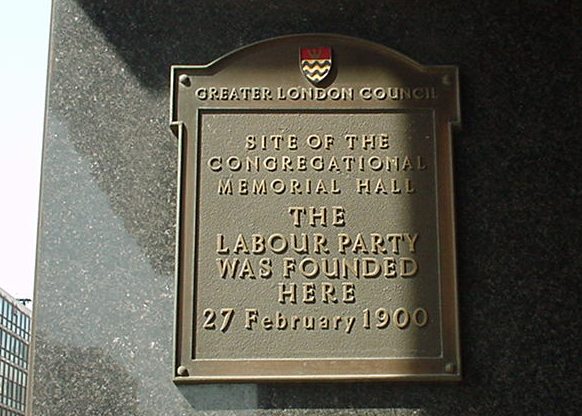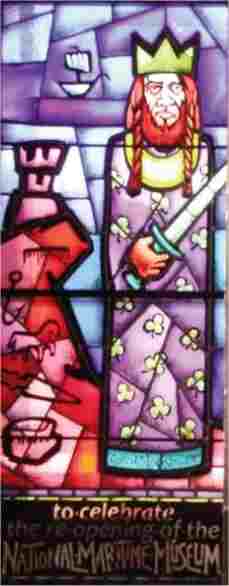|
Eileen O'Casey
Eileen Kathleen O'Casey (; 27 December 1900 – 9 April 1995), known by the stage name Eileen Carey, was an Irish actress and author. Early life Eileen O'Casey was born Eileen Kathleen Reynolds in Dublin on 27 December 1900. She was the youngest daughter of Athlone accountant Edward Reynolds and his wife Kathleen Reynolds (née Carey), a nurse from County Mayo. Her parents had been married and begun their family in South Africa, where they had two sons, one of whom died there. The family had returned to Ireland due to the outbreak of the Second Boer War. When she was a child, the family suffered due to her father's mental health and poor financial choices, which resulted in him losing their Dublin house through gambling. Following this, the family moved to London. In London, O'Casey's remaining brother died. As her father had returned to South Africa, and her mother was working as a live-in nurse, O'Casey was sent to an orphanage boarding school run by the Sisters of Charity. Fo ... [...More Info...] [...Related Items...] OR: [Wikipedia] [Google] [Baidu] |
Dublin
Dublin is the capital and largest city of Republic of Ireland, Ireland. Situated on Dublin Bay at the mouth of the River Liffey, it is in the Provinces of Ireland, province of Leinster, and is bordered on the south by the Dublin Mountains, part of the Wicklow Mountains range. Dublin is the largest city by population on the island of Ireland; at the 2022 census of Ireland, 2022 census, the city council area had a population of 592,713, while the city including suburbs had a population of 1,263,219, County Dublin had a population of 1,501,500. Various definitions of a metropolitan Greater Dublin Area exist. A settlement was established in the area by the Gaels during or before the 7th century, followed by the Vikings. As the Kingdom of Dublin grew, it became Ireland's principal settlement by the 12th century Anglo-Norman invasion of Ireland. The city expanded rapidly from the 17th century and was briefly the second largest in the British Empire and sixth largest in Western Europ ... [...More Info...] [...Related Items...] OR: [Wikipedia] [Google] [Baidu] |
Keening
Keening (, ) is a traditional form of vocal lament for the dead in the Gaelic Celtic tradition, known to have taken place in Ireland and Scotland. Keening, which can be seen as a form of sean-nós singing, is performed in the Irish and Scottish Gaelic languages (the Scottish equivalent of keening is known as a coronach). Keening was once an integral part of the formal Irish funeral ritual, but declined from the 18th century and became almost completely extinct by the middle of the 20th century. Only a handful of authentic keening songs were recorded from traditional singers. Etymology "Keen" as a noun or verb comes from the Irish and Scottish Gaelic term ("to cry, to weep"), and references to it from the 7th, 8th, and 12th centuries are extensive. Probably at the origin of "couiner" in French. Melody and text The tune and lyrics rely on the repetition of a couple of basic motifs which can be variably extended or shortened. It seems that there was never an established ... [...More Info...] [...Related Items...] OR: [Wikipedia] [Google] [Baidu] |
Actresses From County Dublin
An actor (masculine/gender-neutral), or actress (feminine), is a person who portrays a character in a production. The actor performs "in the flesh" in the traditional medium of the theatre or in modern media such as film, radio, and television. The analogous Greek term is (), literally "one who answers".''Hypokrites'' (related to our word for hypocrite) also means, less often, "to answer" the tragic chorus. See Weimann (1978, 2); see also Csapo and Slater, who offer translations of classical source material using the term ''hypocrisis'' (acting) (1994, 257, 265–267). The actor's interpretation of a rolethe art of acting pertains to the role played, whether based on a real person or fictional character. This can also be considered an "actor's role", which was called this due to scrolls being used in the theaters. Interpretation occurs even when the actor is "playing themselves", as in some forms of experimental performance art. Formerly, in ancient Greece and the medieval wo ... [...More Info...] [...Related Items...] OR: [Wikipedia] [Google] [Baidu] |
1995 Deaths
This is a list of lists of deaths of notable people, organized by year. New deaths articles are added to their respective month (e.g., Deaths in ) and then linked below. 2025 2024 2023 2022 2021 2020 2019 2018 2017 2016 2015 2014 2013 2012 2011 2010 2009 2008 2007 2006 2005 2004 2003 2002 2001 2000 1999 1998 1997 1996 1995 1994 1993 1992 1991 1990 1989 1988 1987 1986 Earlier years ''Deaths in years earlier than this can usually be found in the main articles of the years.'' See also * Lists of deaths by day * Deaths by year (category) {{DEFAULTSORT:deaths by year ... [...More Info...] [...Related Items...] OR: [Wikipedia] [Google] [Baidu] |
1900 Births
As of March 1 ( O.S. February 17), when the Julian calendar acknowledged a leap day and the Gregorian calendar did not, the Julian calendar fell one day further behind, bringing the difference to 13 days until February 28 ( O.S. February 15), 2100. Summary Political and military The year 1900 was the end of the 19th century and the beginning of the 20th century. Two days into the new year, the U.S. Secretary of State John Hay announced the Open Door Policy regarding China, advocating for equal access for all nations to the Chinese market. The Galveston hurricane would become the deadliest natural disaster in United States history, killing between 6,000 and 12,000 people, mostly in and near Galveston, Texas, as well as leaving 10,000 people homeless, destroying 7,000 buildings of all kinds in Galveston. As of 2025, it remains the fourth deadliest Atlantic hurricane on record. An ongoing Boxer Rebellion in China escalates with multiple attacks by the Boxers on Chines ... [...More Info...] [...Related Items...] OR: [Wikipedia] [Google] [Baidu] |
Golders Green Crematorium
Golders Green Crematorium and Mausoleum was the first crematorium to be opened in London, and is one of the oldest crematoria in Britain. The land for the crematorium was purchased in 1900, costing £6,000 (the equivalent of £136,000 in 2021), and the crematorium was opened in 1902 by Sir Henry Thompson. Golders Green Crematorium, as it is usually called, is in Hoop Lane, off Finchley Road, Golders Green, in northwest London, near Golders Green Underground station. It is directly opposite the Golders Green Jewish Cemetery. (Golders Green is an area with a large Jewish population.) The crematorium is secular, accepts all faiths and non-believers; clients may arrange their own type of service or remembrance event and choose whatever music they wish. The crematorium gardens are listed at Grade I in the National Register of Historic Parks and Gardens. History The legality of cremation in Great Britain was not confirmed until 1885. The first crematorium was built in Wo ... [...More Info...] [...Related Items...] OR: [Wikipedia] [Google] [Baidu] |
Denville Hall
Denville Hall is a historic building in Northwood, a town in the London Borough of Hillingdon, England, which is used as a retirement home for professional actors, actresses and members of other theatrical professions. The present building incorporates part of a 16th-century house, which was substantially rebuilt in 1851 and later considerably extended after becoming a retirement home in 1926. Many well-known British actors and actresses have lived there. History and description The hall includes part of a 16th-century house called Maze Farm. In the 18th century it belonged to the judge Sir John Vaughan. In 1851 it was rebuilt in Victorian Gothic style by Daniel Norton, and renamed Northwood Hall. Alfred Denville, impresario, actor-manager and MP, bought the hall in 1925 and dedicated it to the acting profession in memory of his son Jack, who had died at the age of 26 after onstage complications with re-aggravated World War I injuries. He renamed the building Denville Hall ... [...More Info...] [...Related Items...] OR: [Wikipedia] [Google] [Baidu] |
Dún Laoghaire
Dún Laoghaire ( , ) is a suburban coastal town in County Dublin in Ireland. It is the administrative centre of the county of Dún Laoghaire–Rathdown. The town was built up alongside a small existing settlement following 1816 legislation that allowed the building of a major port to serve Dublin. It was known as Dunleary in the English language, until it was renamed Kingstown in honour of King George IV's 1821 visit, and in 1920 was given its present name Dún Laoghaire, the original Irish form from which "Dunleary" was anglicised. Over time, the town became a residential location, a seaside resort, the terminus of Ireland's first railway and the administrative centre of the former borough of Dún Laoghaire, and from 1994, of the county of Dún Laoghaire–Rathdown. Toponymy The town's name means "fort of Laoghaire". This refers to Lóegaire mac Néill (modern spelling: Laoghaire Mac Néill), a 5th-century High King of Ireland, who chose the site as a sea base from which to ... [...More Info...] [...Related Items...] OR: [Wikipedia] [Google] [Baidu] |
Torquay
Torquay ( ) is a seaside town in Devon, England, part of the unitary authority area of Torbay. It lies south of the county town of Exeter and east-north-east of Plymouth, on the north of Tor Bay, adjoining the neighbouring town of Paignton on the west of the bay and across from the fishing port of Brixham. In 2011 the built-up area of Torquay had a population of 65,245. The town's economy, like Brixham's, was initially based upon fishing and agriculture; however, in the early 19th century, it began to develop into a fashionable seaside resort. Later, as the town's fame spread, it was popular with Victorian society. Renowned for its mild climate (at least for England), the town earned the nickname the English Riviera. The writer Agatha Christie was born in the town and lived at Ashfield in Torquay during her early years. There is an "Agatha Christie Mile", a tour with plaques dedicated to her life and work. The poet Elizabeth Barrett Browning lived in the town from ... [...More Info...] [...Related Items...] OR: [Wikipedia] [Google] [Baidu] |
Totnes
Totnes ( or ) is a market town and civil parish at the head of the estuary of the River Dart in Devon, England, within the South Devon Area of Outstanding Natural Beauty. It is about west of Paignton, about west-southwest of Torquay and about east-northeast of Plymouth. It is the administrative centre of the South Hams District Council. Totnes has a long recorded history, dating back to 907, when its first castle was built. By the twelfth century it was already an important market town, and its former wealth and importance may be seen from the number of merchants' houses built in the sixteenth and seventeenth centuries. Today, the town has a sizeable alternative and New Age community, known as a place where one can live a Bohemianism, bohemian lifestyle, though has in recent times also gained a reputation as being a hotspot for Conspiracy theory, conspiracy theorists within the UK. The 2021 United Kingdom census, 2021 census recorded a population of 9,214, a 14% increase ... [...More Info...] [...Related Items...] OR: [Wikipedia] [Google] [Baidu] |





